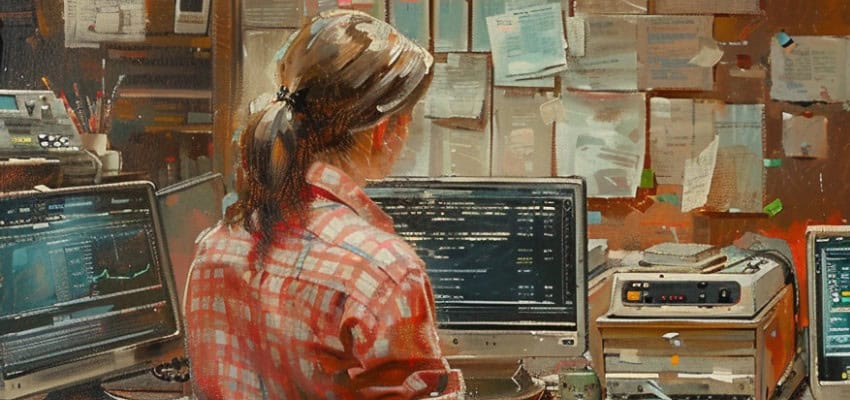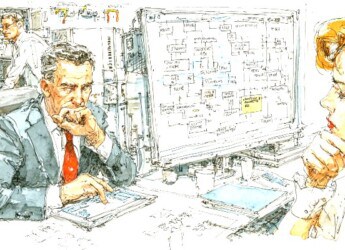Editor’s Note: As the landscape of journalism continues to evolve with the advent of advanced technologies, understanding the role and impact of techno-journalists becomes increasingly important. Integrating AI and large language models (LLMs) has significantly changed how news is researched, written, and distributed. Techno-journalists, who leverage these technologies to enhance their work, represent a new era in journalism. This article explores the defining characteristics of techno-journalists, examines the ethical challenges they face, particularly concerning plagiarism, patchwriting, and excessive aggregation, and discusses strategies for maintaining journalistic integrity in this rapidly evolving landscape.
This exploration is critical for professionals in cybersecurity, information governance, and eDiscovery. As these fields intersect with journalism, understanding how information is created and disseminated can provide valuable insights into the integrity and reliability of the data being handled. For cybersecurity professionals, the ethical use of AI in journalism parallels concerns about data privacy and protection. Information governance experts can benefit from understanding how techno-journalists manage and curate digital content, ensuring accuracy and transparency. eDiscovery professionals who rely on accurate and original information must be aware of the potential pitfalls of plagiarism and excessive aggregation in AI-generated content.
Content Assessment: The Rise of Techno-Journalists: Addressing Plagiarism, Patchwriting, and Excessive Aggregation in the Era of LLMs
Information - 94%
Insight - 95%
Relevance - 92%
Objectivity - 94%
Authority - 95%
94%
Excellent
A short percentage-based assessment of the qualitative benefit expressed as a percentage of positive reception of the recent article from ComplexDiscovery OÜ titled, "The Rise of Techno-Journalists: Addressing Plagiarism, Patchwriting, and Excessive Aggregation in the Era of LLMs."
Industry News – Artificial Intelligence Beat
The Rise of Techno-Journalists: Addressing Plagiarism, Patchwriting, and Excessive Aggregation in the Era of LLMs
ComplexDiscovery Staff
The digital revolution has dramatically reshaped the landscape of journalism. The proliferation of AI technologies and LLMs like ChatGPT has equipped journalists with powerful tools to enhance their storytelling capabilities, streamline their workflows, and reach wider audiences. This technological shift has given rise to a new breed of journalists known as techno-journalists. These professionals are not just passive technology users; they actively integrate it into their daily practices to push the boundaries of what is possible in journalism.
Techno-journalists are defined by their ability to harness these advanced tools to produce high-quality, data-driven, and engaging content. Their work is characterized by an innovative approach to storytelling, a deep understanding of digital platforms, and a commitment to ethical standards in an era where the lines between original and aggregated content can easily blur. To fully appreciate the role and impact of techno-journalists, it is essential to explore their defining characteristics and the ethical challenges they face, particularly in the context of LLMs.
Defining Techno-Journalists
Techno-journalists represent a transformative evolution in journalism, integrating advanced technologies into their everyday practices. Unlike traditional journalists, who may use technology primarily for basic tasks, techno-journalists leverage artificial intelligence (AI), large models (LLMs), and other cutting-edge tools to enhance their reporting, writing, and content production processes. This modern approach sets techno-journalists apart and positions them at the forefront of digital journalism.
Key Characteristics of Techno-Journalists
Technological Integration
Techno-journalists seamlessly incorporate AI tools, data analysis software, and other advanced technologies into their daily workflow. This integration allows them to streamline tasks such as transcription, fact-checking, and initial drafting, thereby freeing up time for more in-depth reporting and analysis.
Digital Fluency
Proficiency in a wide range of digital tools and platforms is a hallmark of techno-journalists. They utilize these resources for research, content creation, and distribution, ensuring their work reaches a broad and diverse audience.
Adaptability
The rapid pace of technological advancements necessitates continuous skill development. Techno-journalists regularly update their knowledge and expertise to stay current with emerging technologies and trends.
Innovative Storytelling
Techno-journalists are known for their innovative storytelling techniques. They employ interactive formats, data visualization, and multimedia elements to present stories engaging and compellingly, enhancing the reader’s experience.
Ethical Considerations
Mindfulness of the ethical implications of technology use is crucial for techno-journalists. They prioritize issues such as bias, transparency, and accuracy in their work, maintaining high ethical standards despite the complexities introduced by advanced technologies.
Efficiency Enhancement
By utilizing AI and other technologies, techno-journalists enhance their efficiency. Automated tools assist with routine tasks, allowing journalists to focus on more substantive aspects of their work, such as investigative reporting and in-depth analysis.
Data-Driven Reporting
Techno-journalists frequently employ data analysis tools to uncover stories and provide quantitative evidence to support their reporting. This data-driven approach enhances the credibility and depth of their articles.
Cross-Platform Proficiency
Techno-journalists are adept at producing and adapting content for various digital platforms and formats. This proficiency ensures their work is accessible and engaging across multiple channels.
These characteristics define the unique role of techno-journalists in the modern media landscape. However, adopting such advanced technologies introduces several ethical challenges that professional writers must address to maintain journalistic integrity.
Challenges in the Era of LLMs
The advent of large language models (LLMs) ranging from ChatGPT and Claude to Gemini and Llama has revolutionized many aspects of journalism, offering powerful tools for content creation, data analysis, and audience engagement. These advancements also have significant challenges, particularly in plagiarism, patchwriting, and excessive aggregation.
Plagiarism
Plagiarism, using someone else’s work without proper attribution, has long been a concern in journalism. The rise of LLMs has exacerbated this issue, as these models can generate text that closely mimics existing content. Journalists might unintentionally or deliberately include passages that are too similar to existing works, undermining their credibility and eroding public trust in the media. The societal and professional consequences of plagiarism can be severe, leading to legal repercussions, loss of reputation, and diminished trust in journalistic institutions. Quality control measures, such as the use of plagiarism detection tools and rigorous editorial oversight, are essential to prevent such occurrences and ensure the authenticity of the content.
Patchwriting
Patchwriting is a subtler form of plagiarism where a writer rephrases someone else’s text without proper attribution or significant original input. While not as blatant as direct plagiarism, patchwriting still compromises the originality and integrity of journalistic work. With their ability to generate paraphrased content, LLMs can inadvertently encourage this practice. Techno-journalists might rely on LLMs to quickly produce content, resulting in articles that are essentially reworded versions of existing pieces. This practice diminishes the quality of journalism and raises ethical concerns about the authenticity and originality of published content. Implementing quality control practices, including thorough reviews and proper attribution protocols, can mitigate these risks.
Excessive Aggregation
Content aggregation, the practice of compiling information from various sources, is a common and valuable technique in journalism. However, excessive aggregation, where original reporting is minimal or non-existent, can be problematic. LLMs can facilitate this by generating summaries and compilations of existing content, leading to a proliferation of articles that offer little to no new information. This trend dilutes the richness of journalistic content as articles become more about rehashing existing information rather than providing fresh insights or investigative reporting. Over-reliance on aggregation can also reduce the diversity of perspectives in the media, as fewer journalists engage in original reporting. Quality control measures, such as ensuring a balance between aggregated and original content, are vital in maintaining the depth and diversity of journalistic output.
Balancing LLM Usage with Ethical Journalism
Transitioning from the challenges LLMs pose, it is imperative to explore how techno-journalists can navigate these issues without compromising their ethical standards. Adopting responsible practices is crucial in maintaining the credibility and integrity of journalistic work in this new technological era.
Maintaining Originality
Journalists should use LLMs as tools for inspiration and efficiency, not as replacements for original thought and analysis. Maintaining originality is crucial for preserving the integrity and credibility of journalistic work. Ensuring stringent quality control through regular checks and balances can help uphold this standard.
Proper Attribution
Accurate crediting of sources is essential to avoid plagiarism and patchwriting. Journalists must ensure all referenced content is appropriately attributed, maintaining transparency and ethical standards. Implementing robust quality control protocols can aid in verifying proper attribution.
Critical Thinking
Encouraging deeper analysis and critical thinking is vital for producing unique and insightful content. Journalists should conduct thorough research and reflection, going beyond surface-level information to provide meaningful perspectives. Quality control measures should include a review process that emphasizes critical analysis and original contributions.
Use Detection Tools
Employing plagiarism detection software can help ensure the originality of content. These tools can identify potential issues before publication, allowing journalists to address them proactively. Regular quality control checks with these tools can prevent unethical practices.
Ethical Frameworks
Establishing and adhering to ethical frameworks specific to using AI and LLMs in journalism can guide techno-journalists in making responsible decisions. These frameworks should encompass principles of accuracy, transparency, and accountability. Quality control mechanisms should be embedded within these frameworks to monitor and uphold ethical standards continuously.
By adopting these practices and integrating stringent quality control measures, techno-journalists can effectively balance the benefits of LLMs with the need to uphold ethical standards. This balance is essential for maintaining the credibility and value of journalistic work in the digital age.
Ensuring Ethical Integrity in the Future of Journalism
The integration of LLMs in journalism presents both opportunities and challenges. While these tools can enhance efficiency and creativity, they also pose risks of plagiarism, patchwriting, and excessive aggregation. Techno-journalists must remain vigilant and committed to ethical standards to navigate these challenges effectively. By doing so, they can ensure that their work remains credible, original, and valuable in an increasingly AI-driven world.
As the landscape of journalism continues to evolve, techno-journalists’ role will become increasingly significant. Their ability to leverage advanced technologies while upholding ethical standards will determine the future of journalism, influencing how news is created, disseminated, and consumed. Through responsible practices and a commitment to integrity, techno-journalists can lead the way in this new era, ensuring that the transformative potential of AI and LLMs is realized without compromising the core values of their profession.
News Sources
- Plagiarism and Artificial Intelligence: Societal Consequences of Using Plagiarized Content from ChatGPT and LLMs in Journalism, Law, and the Education Sectors
- Real-world usage of LLMs in Journalism
- New AI and Large Language Model Tools for Journalists: What to Know
- Is it original? An editor’s guide to identifying plagiarism
- Julia Angwin on trust in journalism and the future of AI and the news
Assisted by GAI and LLM Technologies
Additional Reading
- Small Language Models: A Paradigm Shift in AI for Data Security and Privacy
- Combating AI Hallucinations: Oxford Researchers Develop New Detection Method
Source: ComplexDiscovery OÜ



























